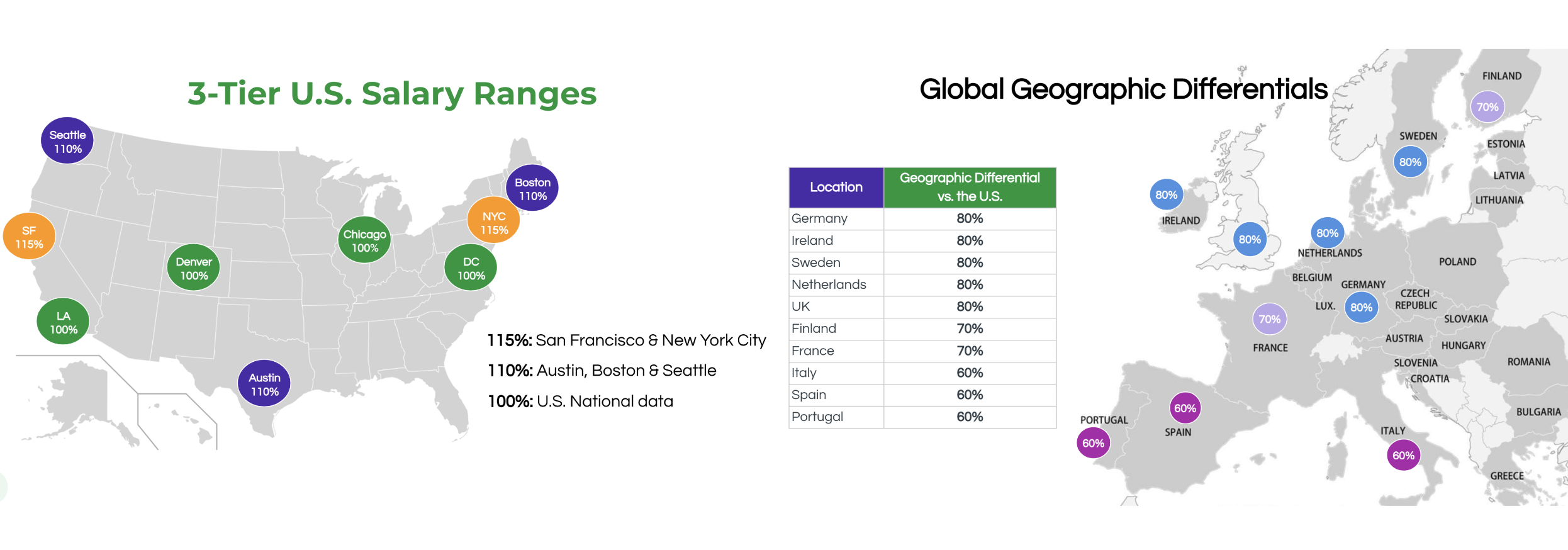
How to Combat Pay Inequities
Governments and employers agree that closing pay inequity is a top priority. Some reports indicate that 57% of companies agree gender diversity initiatives improve business outcomes, and 60% of companies reported increased profits and productivity. However, with increasingly more transparency laws being enforced to address gender wage gaps, the market still needs action items to combat pay inequities on a micro level.
For companies to successfully and strategically combat pay inequities, they must create a compensation plan that benefits their employees while supporting business initiatives. Organizations must comprehensively evaluate their workforce's market positioning using relevant and reliable market data and incorporate market data and performance ratings within compensation reviews to tackle pay inequity.
To evaluate pay equity in your organization, use the CATS method: Calibrate, Articulate, Tailor, and Study.
Steps to Evaluate Pay Equity:
- Calibrate job levels across the organization
- Articulate compensation philosophy
- Tailor salary ranges
- Study compa-ratio by department/function
Calibrate
To begin evaluating pay equity in your workforce, calibrate the jobs at your company by job leveling.
Job leveling establishes the foundation for your organization’s structure and creates the framework for compensation ranges. Accurate job leveling involves evaluating the scope and responsibility of every role at your company and matching employees to a job level
Job levels include two career tracks: management and individual contributors. This supports career progression for your employees, giving everyone the visibility of potential career steps and the possibility of becoming a manager should they want to take on leadership responsibilities.
Articulate
Articulating a compensation philosophy involves understanding your organization's unique business needs, then identifying which jobs are vital to the organization's success and may require targeting a more competitive range.
When establishing a pay philosophy, decide the percentile of the market data to target for the job families in your organization. This might mean that resource-constrained jobs (e.g., technical jobs) differ in philosophy from non-resource-constrained positions.
For example, companies typically target the 65th or 75th percentile as the midpoint of the range for technical positions like Software Engineers and Product Managers but target the 50th percentile for jobs that are less difficult to hire and retain top talent.
Determining your company's market data cut approach and using it consistently also helps decrease unconscious bias and potential human errors in pay decisions. For example, if a company's workforce is located in 10+ countries, consider using a tiered approach (aka geographic differentials); this also minimizes the administrative burden of managing compensation and is more scalable.

Tailor
Tailoring salary ranges to fit your organization's needs sets a baseline for retaining and recruiting efforts, especially for the roles critical to company growth.
Companies may want to place premiums on resource-constrained pay ranges to reduce attrition and support recruiting efforts. For example, suppose a company's market offering involves having software engineers who have significant experience with a programming language that not that many people have. In that case, they might add a premium to the salary range to ensure they can retain and recruit top talent.
Similarly, if roles at your company don’t meet the full scope of the market (i.e., your Customer Success Managers have more routine tasks that don’t consistently require significant independent discretion), consider placing a discount on those ranges.
Tailoring compensation ranges to meet your company's needs ensures you'll make strategic compensation decisions that make sense for your business.
Study
The last step in evaluating pay equity is to study your results. Once steps 1 through 3 are done, you'll be able to calculate the compa-ratio for each employee, and you'll be able to form assumptions based on your company's overall market positioning.
To calculate compa-ratio, divide each employee's base salary by the market midpoint for their matched job. You can continue to analyze further by functional area (i.e., department), gender category, and any demographic group.
Having this information on hand equips you to tackle the steps to combat pay inequities with a comprehensive, data-driven approach.
Final Thoughts
There are many factors to consider when evaluating and combatting pay inequity. Starting with these steps empowers organizations to better recruit and retain talent, increase job satisfaction, reward top performance and enjoy many other benefits that power growth.
- Establish & allocate a compensation review budget
- Determine market adjustments by country
- Articulate pay equity communications
About Kamsa
Kamsa is a software tool that helps companies make informed pay decisions. Our consultative approach to compensation helps organizations overcome their compensation challenges by performing job leveling, articulating a compensation philosophy, and running compensation reviews.


